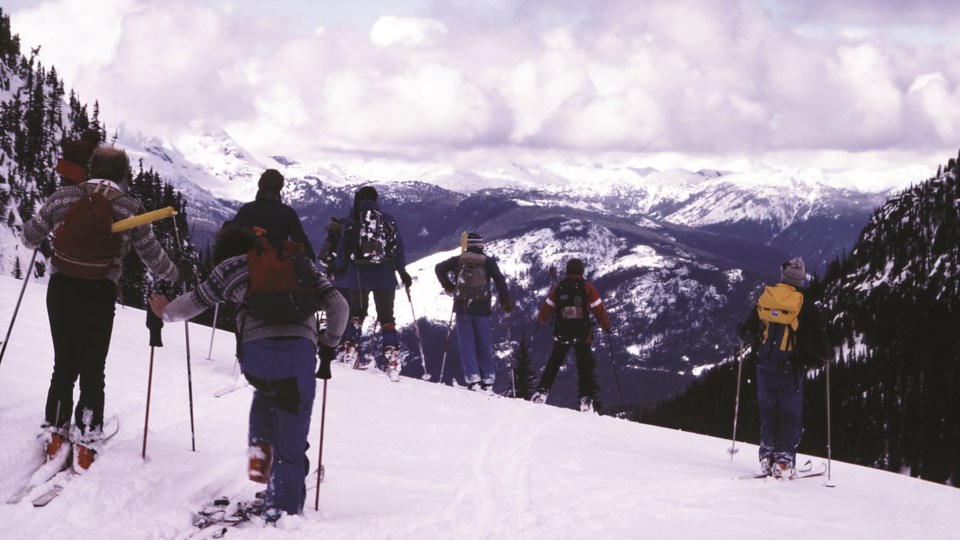Personal locator beacons and cellphones have completely changed the face of adventure in just 20 years. If you are prepared and have the right equipment, it is possible to be rescued in a matter hours, sometimes less, in an emergency situation. Before satellite technology and cellphones it was a different story.
Whistler Search and Rescue (WSAR) formed in 1972 after a tragic avalanche that killed four people in Whistler’s Back Bowl. The subsequent search highlighted the need for search coordination, and WSAR was born.
Brad Sills joined shortly after WSAR formed, and is now in his 47th year volunteering. He recalled the process of responding to search-and-rescue calls in the 1970s, which would come via the RCMP in Squamish or Pemberton before Whistler had local dispatch. “The call would come to Dave [Cathers] and he would tear his hair out, because almost all of his capacity for mountain rescue were hippies living in the woods without telephones,” he said. “I remember him getting really mad one night going, ‘What the hell do you think I’m supposed to do? Send you losers smoke signals or something?’ We were all laughing. We taunted him a lot about being uptight and responsible.”
Despite much of the team squatting off-grid, the community was small and the “jungle telephone” quite effective. It helped that everyone could usually be found in the Boot Pub each afternoon.
It also took far longer to get messages out from those in need. When someone was injured, others in the party would have to get to the nearest town or house before help could be called. Typically, this meant that those missing or injured spent more time in the elements—and many did not survive.
Arriving in Whistler as the first lifts were being built, Cliff Jennings went on to become one of the first heli-ski guides in Whistler with Pacific Ski Air when it started the winter of 1967-68. Helicopters did not have the same power that they do today. After picking guests up, Pacific Ski Air pilots would have to slowly make their way up the mountain using the available thermals.
Knowing that they had no way to send for help, and that rescue could take a very long time, Cliff Jennings and Glen Creelman tried walking out from Decker Glacier like they would have to if the helicopter broke down. (This is long before Blackcomb was developed.) Cliff is a lifetime member of WSAR, and, using the same unreliable headlamps that search and rescue used, they traversed for 13 hours, skiing the whole time, until they crossed the frozen Green Lake and reached houses to make a phone call.
“We said, ‘Well, if we break down we are in trouble!’ Because we’d never get regular clients out that way. They would have to say, ‘Oh I wonder where they are?’ And go looking for us, for which they would have to get another helicopter because there wasn’t another helicopter in the valley.”
Even the first radios that WSAR had were huge, heavy and basically line-of-sight.
“Everyone has a cellphone now, and if they have reception it is pretty easy to either call or we can ping their phone to find out,” said Vincent Massey, also a lifetime member of WSAR.
“And then the people who are going way out there, who are really qualified, have a SAT phone or a SPOT beacon, and they can call for help. So things have changed, and now we know what to bring and we know what the scenario is because we can either text them or call them.”
Of course, it is still imperative that everyone travels prepared and knows how to use their equipment.




